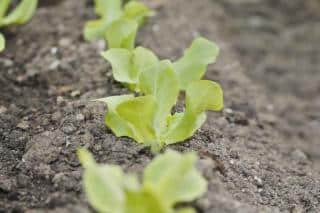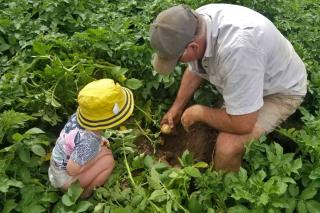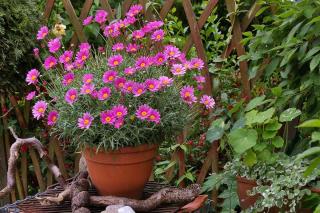Whether for vegetables or certain flower species, direct sowing or sowing in the plot is very easy.
It takes place in spring, after the last frost has passed. It’s also practiced during summer for the planting of most fall and winter vegetables.
→ Also: starting plants in a nursery and other sowing techniques
Direct sowing: prepare the soil well
Sowing directly in the plot means you skip many planting steps and chores. For example, when sowing in a nursery, you have to transplant seedlings several times before they’re in their final growing bed. None of that with direct sowing!
However, you still have to prepare the soil well:
- Start with cleaning the place where you want to plant. Remove all weeds, rocks and buried roots. If you plan to sow a fresh lawn, till the soil with a rototiller.
- Break up clumps in the soil once it has been cleaned, to lighten it.
- Add organic matter with manure or seaweed-based soil conditioner, mixing it into the soil.
- Rake the soil to break it up further.
- Run a roller over the area, without pressing the soil down too much.
At this point, you can choose to water and let the plot sit as is for 2 weeks. This will give any weed seeds time to sprout. They’ll be much easier to control since you can pull all sprouts out right before your direct sowing. This is called the “stale bed technique”.
- Sow the seeds as evenly as possible. Depending on the species, either sow in rows or in seed holes. If planting a lawn, prefer broadcast sowing.
- Cover seeds with special seedling soil mix (no need to do this if sowing a lawn).
- Press down lightly using the backside of the rake.
- Water abundantly.
Plants for which direct sowing is best

- Vegetables: red beet, carrot, cabbage, lettuce, onion, bean, chives, corn salad, turnip, thyme, sorrel, parsley or radish.
- Flowers: morning glory, marvel of peru, nasturtium, chrysanthemum, clarkia, cup-and-saucer vine, ornamental gourd and colocynth, red poppy, tickseed, cosmos, larkspur, gaillardia, gypsophila, touch-me-not, flax, French marigold, sweet pea, rose moss, rudbeckia, marigold and sunflower are plants that can be sown directly in the ground.
- Herbs: comfrey is known for its deep roots, it doesn’t like being transplanted.





I have a question
Ask my questionI'd like to comment
Post a commentNo comments yet – be the first to share your thoughts!